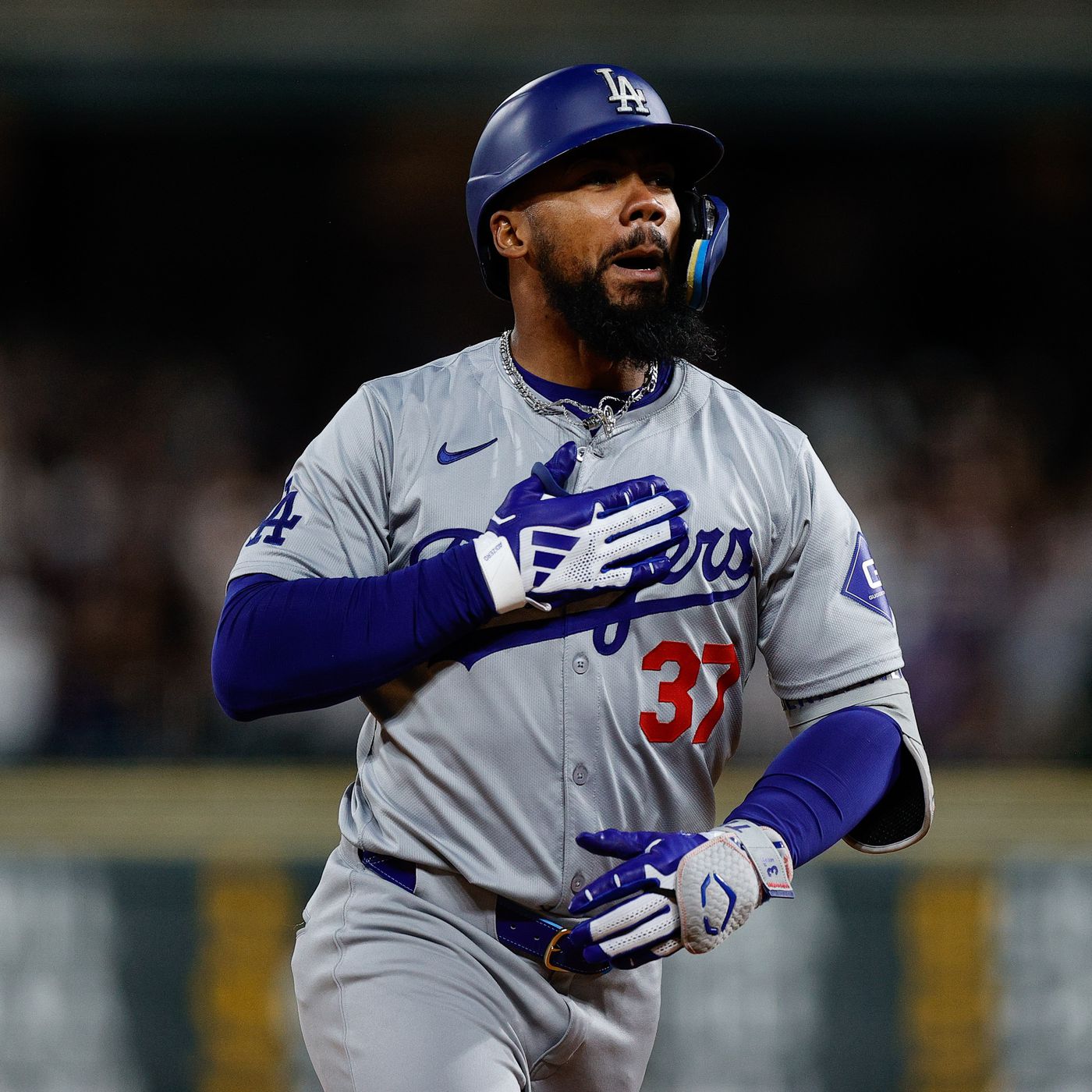 It’s difficult to imagine a more successful one-year deal for both player and team than the recently expired pact between outfielder Teoscar Hernández and the Los Angeles Dodgers.
It’s difficult to imagine a more successful one-year deal for both player and team than the recently expired pact between outfielder Teoscar Hernández and the Los Angeles Dodgers.
Generally, the motivation for a player to sign a one-year deal is to reestablish a standard that was much higher before a poorly timed down year dampened his value going into free agency. Coming off a disappointing season with the Mariners in 2023, Hernández was unable to obtain the caliber of multi-year deal he was seeking last winter and instead signed a one-year, $23.5 million pact with the Dodgers, a logical landing spot for any player looking to rediscover the best version of himself.
If the goal was strictly to put up a better season than the previous one and remind the league what he’s capable of, Hernández unquestionably accomplished that in 2024. He raised his OPS by nearly 100 points, hit a career-high 33 home runs and was one of the more productive outfielders in baseball. That said, had Hernández netted similar statistical achievements for, say, the 82-win Twins, we wouldn’t be talking about him nearly as much at the outset of free agency.
But Hernández’s year in Dodger blue carried significant weight beyond his improved numbers. From the earliest days of spring training in February, it became clear that he would be a main character on the team that attracted the most eyeballs of any major-league club. While Shohei Ohtani’s historic 50/50 campaign was the undisputed headline of the Dodgers’ latest run to the NL West title, the division crown could not have been claimed without Hernández’s contributions. In a regular season in which Freddie Freeman was merely very good and Mookie Betts missed two months due to a broken hand, Hernández proved to be the Dodgers’ most consistent source of offensive production not named Ohtani. He made his second career All-Star Game and was the surprise winner of the Home Run Derby, raising his national profile further.
No longer was Hernández a standout slugger for a fringe playoff contender, as he was in Toronto or Seattle; he was a driving force in the heart of a juggernaut lineup for the team with the best record in baseball, a team that eventually stormed through October en route to a World Series championship. Hernández delivered multiple massive swings to help L.A. take down the rival Padres in the NLDS, and he reemerged after a quiet NLCS to drive in several more key runs in the World Series against the Yankees. A season that began with optimism that the talented outfielder could return to star form ended with Hernández in tears on stage at Dodger Stadium, expressing his appreciation for an adoring fan base as part of a raucous championship celebration.
What went wrong for Hernández in Seattle?
Hernández’s dream season with the Dodgers makes his lone campaign in Seattle look like even more of a miserable slog in retrospect. But it’s inaccurate to suggest that Hernández was downright bad as a Mariner — his production was just wildly uneven.
On the surface, it’s not difficult to understand why Hernández’s 2023 was universally deemed a down year. He struck out a career-high 211 times, ran a career-low 5.6% walk rate and finished with his lowest OPS (.741) since he became an every-day player in 2018. But a closer look reveals that his performance at the plate with Seattle was not a decline in output across the board but, rather, the product of sky-high peaks and particularly unpleasant valleys.
This is crucial for understanding not just why Hernández ended up in Los Angeles on a one-year deal but also how to project him moving forward as he enters free agency a second time on a much higher note.
The most obvious place to start — and the dominant narrative surrounding his struggles — is Hernández’s issues hitting at T-Mobile Park. This is something he has spoke openly about since leaving the Mariners, and the numbers don’t lie: Hernández hit .217/.263/.380 in home games, a far cry from his .295/.344/.486 line away from Seattle that better reflected his career norms in road games.
But the lopsided nature of Hernández’s 2023 performance can be found in more than just his much-discussed home/road splits. Hernández has always hit left-handed pitching a lot more consistently than he has righties (more on that later), but he was especially poor sans the platoon advantage in 2023: His .718 OPS against right-handers was the worst such mark of his career.
Inspect how he performed against certain pitch types, and another notable imbalance emerges: Hernández’s .435 wOBA against four-seam fastballs was tied with Kyle Tucker and Juan Soto for the ninth-best mark in MLB, but his .240 wOBA against sliders, sweepers and curveballs was one of the worst marks among hitters who saw at least 500 such pitches.
The hot-and-cold motif was perhaps most exemplified by Hernández’s month-by-month production. In his career (including 2024), Hernández has had 30 months in which he received at least 80 plate appearances. Here’s where his OPS from each month of the 2023 season ranked among those 30:
Leave a Reply